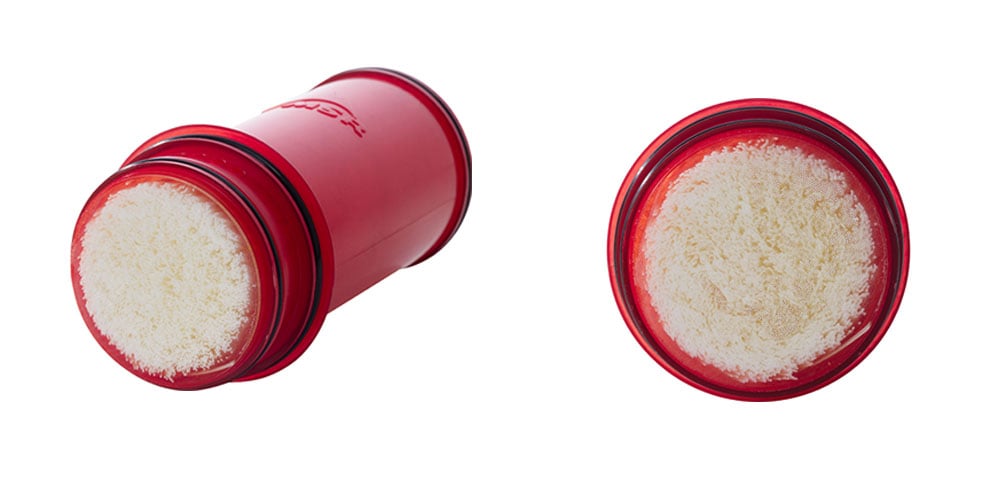Hollow Fiber Membrane Filters: Advantages in Backpacking Water Filters
Of the many water treatment technologies currently used in backpacking water filters and purifiers, few offer the advantages of hollow fiber filters. Here, we’ll take a look at why this light and effective water filtration technology delivers the performance backpackers seek, and the safety and reliability that MSR demands.

What is a hollow fiber membrane and how does it work?
Inside a hollow fiber membrane water filter, hundreds of tubes—resembling tiny straws—are bundled together to create a filter matrix. The walls of these tubes are filled with microscopic pores, or holes. As you pump water through the walls of these fibers, any microbiological threats lurking in the backcountry’s cool, crisp water sources are trapped inside.
This removal method is referred to as size exclusion. That is, the pores in the fibers’ walls are simply too small for the pathogens to fit through, but water still can. These pores so microscopic, they’re invisible to the naked eye.

Advantages of hollow fiber membranes in backpacking filters & purifiers
For backpackers treating raw wilderness water, hollow fiber membranes offer important performance benefits. Some of these are shared with ceramic filters, another size exclusion technology (used in the MSR MiniWorks), though hollow fiber offers them at less weight.
Reliability in challenging water types
Because hollow fibers act as a sieve, physically straining out contaminants, they’re effective in both clear and highly turbid water types. Their ability to stop the microbes is not affected by other contaminants in the water. And variations in pH levels, salts, temperature or color will not impede their effectiveness.
This is an important distinction from UV light, chemical treatments or filters that rely solely on adsorption technologies. Each of these is impaired to some degree by other contaminants in the water.
Lightweight yet fast
Hollow fiber’s surface area-to-weight ratio is simply unmatched. The hollow fiber filter used in the MSR AutoFlow Gravity Filter contains around 800-1000 fibers totaling 0.22 meters squared of surface area. More surface area means a faster flow rate. It also means the filter lasts longer, letting you filter more water before needing to clean the filter to regain its flow rate.

In-field safety check
When a hollow fiber filter is compromised—that is, one or more of the fibers breaks—it’s not obvious by looking at it. But by choosing the right fibers, a filter manufacturer can ensure the filter has a built-in safety check. At MSR, we choose fibers that will pass either air or water, but not both. So, if you’re worried about your filter, you can perform an easy in-field test that shows whether it’s passing air, which would indicate damage. This is a critical feature that not many filters provide; it takes the right kind of hollow fiber and filter design to be able to achieve this.
Obvious end-of-life indicator
By their nature, hollow fiber filters tell you when they’re at the end of their life—a nice, built-in safety measure. When the filter becomes too loaded up with debris and microbes to pass water, and backflushing no longer restores its flow, the filter will simply clog and stop working.
In contrast, a filter that only uses an adsorption technology, has no way of indicating when it’s no longer doing its job.
Not all hollow fiber is created equally
Zac Gleason, manager of MSR’s on-site water lab, notes that hollow fiber can come in a range of qualities, so it’s important to purchase your filter from a reputable manufacturer. “To get hollow fiber that’s of good quality and up to MSR’s standards, we do a lot of research,” he says. “Not all hollow fiber is created equally. They can differ in flow rate, durability, and ability to remove the necessary microbes.”
Is water filter pore size important?
Understanding pore size is important because it indicates the size of the microbes a particular filter or purifier is designed to remove. A backpacking filter (i.e., a microfilter) should feature a pore size of 0.2 microns. This will remove virtually all waterborne bacteria and protozoa.
A backpacking purifier that uses hollow fiber technology should feature a pore size of 0.02 to remove viruses as well. (Notice the zero after the decimal point.) These are the industry standards.

How to care for your hollow fiber filter
Hollow fiber technology can be more delicate than other types of water filtration technologies. At MSR, we use durable housing and bumpers to help protect the fibers. Still, it’s important to try to avoid dropping your hollow fiber filter. In microfilters, freezing will also damage the fibers.
The MSR Guardian purifier is the only hollow fiber treatment device that can withstand dropping* and freezing, much of which has to do with the fact that its advanced fibers are stronger.
In addition, regularly backflushing your hollow fiber filter will help ensure that its flow rate remains high, keeping you enjoying lots of fresh—and clean—wilderness water on your backcountry adventures.
*6 feet to concrete per testing conducted in MSR water lab.
Related Posts:
